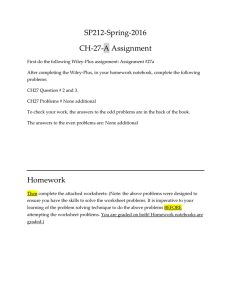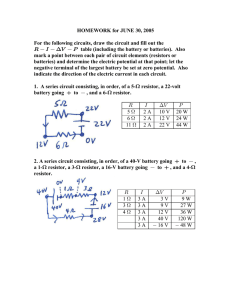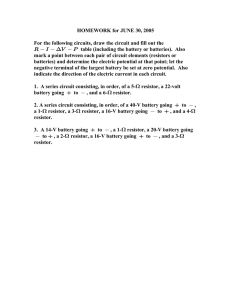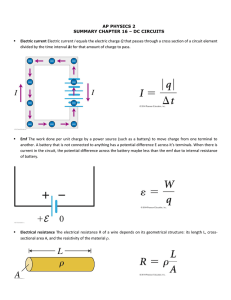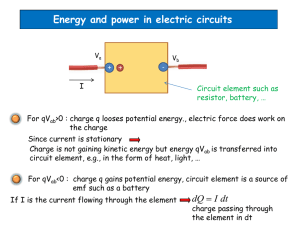CLASS EXERCISE #10 - 30 June 2005
advertisement
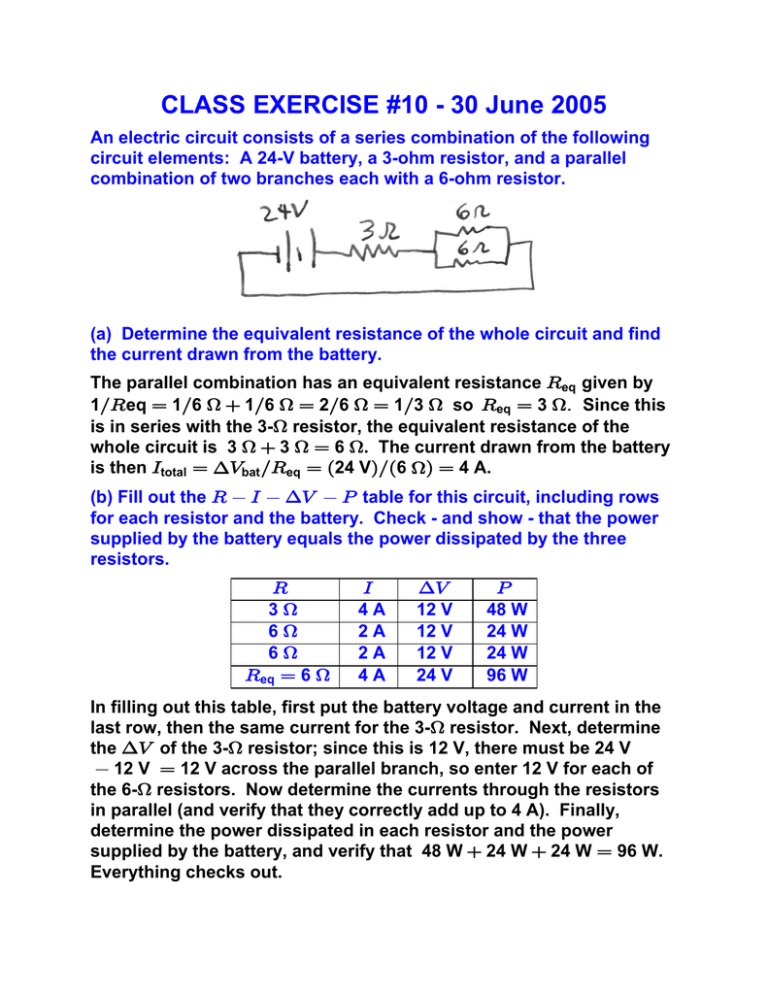
CLASS EXERCISE #10 - 30 June 2005 An electric circuit consists of a series combination of the following circuit elements: A 24-V battery, a 3-ohm resistor, and a parallel combination of two branches each with a 6-ohm resistor. (a) Determine the equivalent resistance of the whole circuit and find the current drawn from the battery. The parallel combination has an equivalent resistance Veq given by 1ÎV eq œ 1Î6 H 1Î6 H œ 2Î6 H œ 1Î3 H so Veq œ 3 HÞ Since this is in series with the 3-H resistor, the equivalent resistance of the whole circuit is 3 H 3 H œ 6 H. The current drawn from the battery is then Mtotal œ ?Zbat ÎVeq œ Ð24 VÑÎÐ6 HÑ œ 4 A. (b) Fill out the V M ?Z T table for this circuit, including rows for each resistor and the battery. Check - and show - that the power supplied by the battery equals the power dissipated by the three resistors. V 3H 6H 6H Veq œ 6 H M 4A 2A 2A 4A ?Z 12 V 12 V 12 V 24 V T 48 W 24 W 24 W 96 W In filling out this table, first put the battery voltage and current in the last row, then the same current for the 3-H resistor. Next, determine the ?Z of the 3-H resistor; since this is 12 V, there must be 24 V 12 V œ 12 V across the parallel branch, so enter 12 V for each of the 6-H resistors. Now determine the currents through the resistors in parallel (and verify that they correctly add up to 4 A). Finally, determine the power dissipated in each resistor and the power supplied by the battery, and verify that 48 W 24 W 24 W œ 96 W. Everything checks out.

